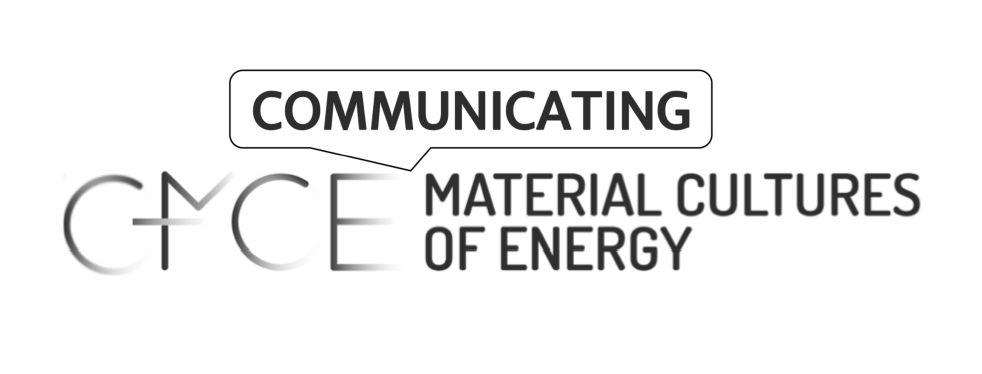activities
Third Knowledge Exchange Session: Public Participation as Communication

The third knowledge exchange session addressed the theme of participation in energy-related communication projects. Topics discussed included policy impact, diversity, inclusivity, and the difficulty of making the energy sector accessible to non-specialists. In his introduction to the session, project organiser Hiroki Shin (Science Museum/Birkbeck) also posed the question to what extent can – or should – designers of participatory projects control the outcomes of those projects? What is the optimum balance between design and spontaneity?
The first speaker to approach these topics was Anna Woodham (King’s College London) who discussed ‘Energy in Store’. This was a collaborative, AHRC-funded project involving King’s College London, the Science Museum Group and a selection of external expert enthusiasts, many of whom had past experience working in the energy sector. The aim of the project was to bring museum curators and expert enthusiasts into conversation through site visits, online forums and face-to-face discussions. It was hoped this conversation would improve curatorial knowledge about the collections, explore ways in which the knowledge of external researchers might be incorporated into museum documentation, and reflect upon how SMG’s energy collection (much of which is not on display) could be made more accessible to external researchers and enthusiasts.
When evaluating the project’s design, Anna stressed the importance of acknowledging the value of the external participants’ knowledge contribution through official recognition, honorarium payments, and expenses. However, she admitted that it was difficult to decide how to describe the participants’ role: were they co-producers, co-creators or advisors? Other challenges stemmed from the gap between curatorial and researcher perspectives: whilst curators approached the discussion from an institutional, legislative and conservational perspective, researchers prioritised their desires to access and handle collections. They also approached the collaboration as a problem-solving exercise rather than a discussion and some initially struggled to contribute to the project’s online discussion group. Encouragement, the establishment of collaborative codes of practice, and careful managing of participant expectations helped to assuage these tensions. Consequently, the project resulted in a better understanding of alternative perspectives and the importance of such knowledge transfers taking place between diverse spaces and generations. In the group discussion after Anna’s talk, we raised the tricky question of how we decide which parts of a museum’s collection merit the time and resources invested in such a project, before discussing cheaper possibilities such as crowdsource cataloguing.
After this in-depth case study, Helen Pallett (University of East Anglia) took a broader view, discussing a project which mapped different kinds of public participation in energy issues between 2010–2015. The project found 258 examples of public participation (though it acknowledged that many other, unrecorded examples probably took place). These examples covered a wide range of topics but the most frequently addressed were renewable energy, energy practices, smart meters and energy demand. Topics that seemed harder to engage with in everyday life and controversial topics, such as fracking and nuclear power, were addressed less often. The project also showed that participation could take a great variety of forms, shining a light on those kinds which receive less publicity and are taken less notice of by policy makers: these included Drawing Energy, a collection of public drawings exploring perceptions of energy. The project suggested that such outputs receive less attention than surveys or studies about behaviour change, which are attractive to governments interested in low-cost interventions. In the discussion, we considered how economic markets affect and create forms of public participation and how socio-economic factors prevent some forms of public participation (such as community groups) from flourishing.
Continuing this theme of community, Jonathan Atkinson from Carbon Co-Op then presented ‘Involving Citizens in Energy System Transition’. He discussed the importance of including community members in the development of energy-related products and services: this can not only create better, more competitive products, but can also help foster public acceptance of change. His presentation introduced a variety of ways of engaging with diverse stakeholders in the energy sector: for instance, guided walks around Manchester for members of the public, politicians, union representatives and other stakeholders invite participants to explore the past, present and future of energy and exchange ideas with one another. Another experimental form of communication is ‘GM Energy Futures’, a leaflet imagining what municipal, citizen-owned energy systems could look like. Jonathan emphasised that providing multiple possibilities (or ‘futures’) was a deliberate design choice; it was hoped that this would appeal to risk-averse policy makers, inspiring them to envisage different long-term (rather than short-term) futures. Jonathan acknowledged that a crucial challenge for participatory energy projects was trying to diversify the kinds of people involved in them: at present, the energy system works best for the educated, white and predominantly male groups designing it. This theme of diversity and inclusion reoccurred across the talks.
The next speaker, Jon Hall, was from Community Energy England. He spoke about the organisation’s attempts to promote such diversification by creating public platforms through which community energy organisations can promote their work, exchange ideas and influence policy. CEE’s upcoming Community Energy Fortnight is a prime example of this, shining a light on the ways community energy organisations are collaborating with schools to empower future generations. Jon stressed the importance of highlighting the achievements of these community groups because much of the press coverage the energy sector receives in public culture is negative. He also underlined the importance of capitalising on the momentum of the School Strike group in order to show young people that there are jobs and opportunities for them within community energy and green organisations. He again acknowledged the need to engage more with low income communities and develop a better understanding of these communities’ distinctive relationships to energy practices.
The last speaker, Bradon Smith (University of Bristol), continued the theme of youth engagement raised in Jon’s talk. Bradon spoke about an AHRC-funded project called ‘Stories of Change’ and, in particular, a project strand called ‘Demanding Times’. This strand involved a collaboration with Greater London Authorities’ Peer Outreach Team, a group of 15 to 25-year-olds who help influence the Mayor of London’s policies. After receiving a crash course in the concepts and challenges of the energy sector, interviewing technique and media creation, these young people conducted research interviews with a variety of energy stakeholders. The interviews sometimes took a creative form: for instance, a photobooth was set up in which interviewees were asked to write an energy-related question on a speech-bubble and hold this above their head. A professional photographer documented the moment. Asking people for questions was found to encourage participation more effectively than asking people for answers.
Bradon’s presentation drew together several themes that had been raised throughout the knowledge exchange session: firstly, ‘Demanding Times’ showed the importance of creative partnerships and imaginative play in encouraging people to engage with a complex sector that can be difficult to understand; engaging people on an emotional as well as a technical level helps to break down the expert vs consumer dichotomy and encourage more inclusive ways of tackling energy issues. Like Anna, Bradon also emphasised the importance of acknowledging participants’ contribution explicitly and through the payment of wages or expenses. But he too stressed that logistical, bureaucratic and perspectival challenges need to be anticipated and negotiated when working with specific groups of participants: for instance, educational and curriculum constraints do not always facilitate youth engagement. The final point which reoccurred throughout the talks was the importance of understanding the distinctive ways in which specific groups engaged with energy: for instance, for the London-based Peer Outreach Team, energy was often synonymous with electricity; this conception is likely to differ significantly from a rural youth group. Throughout the session, we returned several times to the conclusion that understanding such differences can help us tailor our future energy communications and stimulate more productive, inclusive forms of participation.
Written by Hannah Bower





